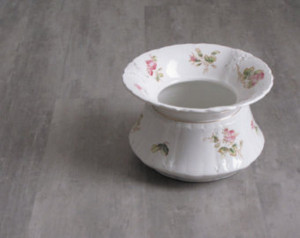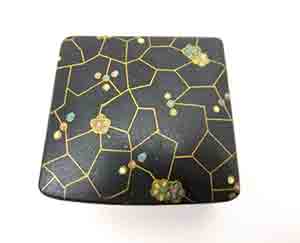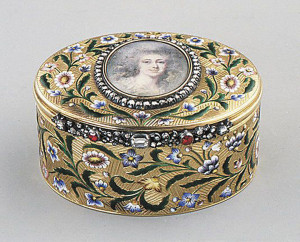The snuff box is one of the many items that have outlived their time in history. After all who even knows what snuff is these days? Ever hear of a “spittle cup?” They were part of the snuff culture during the 18th and 19th centuries used by lady sniffers.
You may have bought a snuff box at a garage sale thinking it was a pill box. After all snuff boxes are small, decorated boxes.
So what is snuff? Basically it is dried, powdered tobacco blended with a variety of substances for aroma and flavor. Vanilla and lavender oil were among the substances for aroma. Tamarind and vanilla were used for flavor. The mix was placed in the nostrils and sniffed.
 Snuff was first discovered, according to history, by Friar Renon Pane a missionary in Haiti around 1493. By 1500 it was a big hit in Europe thanks to Sir Walter Raleigh who brought it to England at that time.
Snuff was first discovered, according to history, by Friar Renon Pane a missionary in Haiti around 1493. By 1500 it was a big hit in Europe thanks to Sir Walter Raleigh who brought it to England at that time.
The royalty and wealthy often had their portraits painted on enamel and inlaid of silver or gold.
 Fast forward to the 18th century when sniffing snuff became socially acceptable, Schools even taught how to do it. The snuff box became a useful, decorative object. Keeping it fresh require a box with strong hinges and a tight lid. It required three finger taps to open it. Often the boxes came with small snuff spoons of ivory. Some boxes had a variety of closures and secret compartments.
Fast forward to the 18th century when sniffing snuff became socially acceptable, Schools even taught how to do it. The snuff box became a useful, decorative object. Keeping it fresh require a box with strong hinges and a tight lid. It required three finger taps to open it. Often the boxes came with small snuff spoons of ivory. Some boxes had a variety of closures and secret compartments.
As snuff filtered down to the average American or European, boxes were made in a variety of sizes, shapes and materials. The least expensive were made of tin. Boxes were almost mass produced made of papier-mâché with a variety of painted motifs.
After the War of 1812, Birmingham, England made silver snuff boxes for the American market with historic ships and portraits of American naval heroes.
Snuff boxes for ladies often came with “spittle” cups. They were made of a variety of ceramics and glass, small and often with handles.
CLUES: So is your discovery a snuff box or a pill box? Since prices range from $50 to the thousands, do your research.
















Follow Us